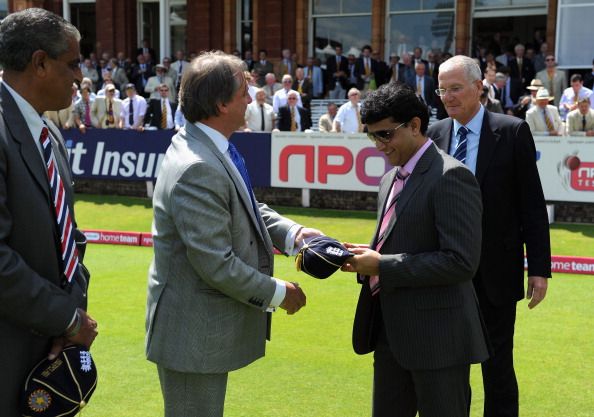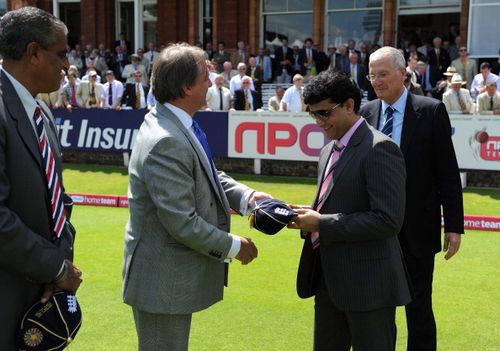
Ranji Trophy: Bengal's year of resurgence
Unlike any other city in India, Mumbai will be forever known for its cricketing might. There is something rather extraordinary about the Mumbai cricketing culture, that year after year, it churns out exceptional cricketing talent. Historian and cricket writer, Ramachandra Guha once wrote about how Bombay’s All-time XI could walk into any Indian cricket team on any given day.
And rightly so, Sunil Gavaskar, Vijay Merchant, Dilip Vengsarkar, the Sachin Tendulkar & Vijay Manjrekar, aren’t small names. Much before the likes of Rohit Sharma and Ajinkya Rahane burst into the scene, these very gentlemen hoisted the flag of the Bombay school of batsmanship.
Talk about bowling – think about the wily Ajit Agarkar or the tiny Ramakant Desai, who was unusually fast for a bowler of his size. In fact, Mumbai’s Subhas Gupte in his prime could even give Shane Warne a run for his money, with his leg-spin.

Ex-India captain, Sourav Ganguly (third from left) happens to be Bengal’s greatest gift to Indian cricket
While Mumbai’s might will forever feature in the annals of Indian cricket’s history, the eastern state of Bengal’s contribution to the sport largely goes unrecognized, overshadowed by the dominance of Football – a game that still runs in the veins of the every Bengali. This state that produced Pankaj Roy and Sourav Ganguly also happens to be home to Asia’s “Mecca of Cricket”, the Eden Gardens. And it is not very far from the Eden that Bengal’s budding cricketers hone their skills in the lush expanses of the maidan.
This year, the maidan was set alive by a buzz on the first day of the New Year. Bengal’s Ranji team was facing Tamil Nadu in a do-or-die game, down south, in the dustbowls of Chennai. Both teams had to win this game to avoid being knocked out and had to pray for other results to go their way. News started trickling in that Tamil Nadu were cruising at 110/1, needing 75 more runs to win. Dinesh Karthik had already scored a half century and had the domestic war-horse, S Badrinath at the other end. But then something unexpected happened – Badrinath fell leg-before to the off spin of Lahiri. 15 runs later, Karthik fell for 62. And in 18 overs time, Tamil Nadu were reeling at 158/9, desperately trying to reach out to those 17 runs, while Bengal seemed to have them by the throat.
Between Karthik’s wicket and that of Rahil Shah, Bengal’s Lahiri had produced a gem. Using Chepauk’s grossly underprepared track to his advantage, this 90 odd game veteran, bagged as many as seven wickets to break the backbone of the Tamil Nadu batting. But the game wasn’t over yet, as the last pair added 12 runs to take their team excruciatingly close to the target before Writtick Chatterjee caught the last man, Malolan Rangarajan, plumb in front.
As the close-in fielders leapt in joy and others ran in to collect the stumps as souvenirs, the added delight could not be missed. In a simultaneous match, Baroda were on the verge of losing to Rajasthan, and the additional six points for Bengal meant a place in the quarter finals after a rather disappointing 2012/13 season. The feat had been achieved despite the absence of three of its top players: Manoj Tiwary due to injury, Wriddhiman Saha and Mohammad Shami due to national duty.
Here was a young team, ably led by Laxmi Ratan Shukla, dismissing the strong TN line-up once for 85 and once for 180, in conditions that were very different from the slow-low bounce of the Eden wicket that they were used to, back in Kolkata. Congratulatory messages started pouring in for the team and interest in domestic matches was revived thanks to this nail-biting finish, but deep down, each player in the Bengal set up will be heaving a sigh of relief for being able to get this monkey off their back.